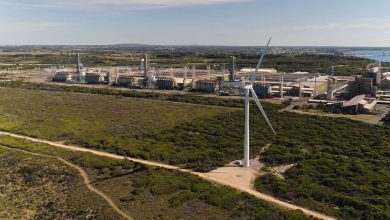2018 – Far from an average year
According to ‘2018 PRECIOUS METALS FORECAST SURVEY’ by the London Bullion Market Association (LBMA) of analysts’ predictions for the gold price this year suggest a wild ride for bullion after a fairly uneventful 2017.
The LBMA, a standards-setting body for the industry, says the analysts polled are divided on the paths that precious metal prices will take in 2018.
“It was the best of times, it was the worst of times, it was the age of wisdom…”
Strongly divergent views dominate this year’s forecasts with the 34 analysts divided on the paths that precious metal prices will take in 2018. Opinions differ as to the level of US real interest rates, the likely impact of geopolitical factors and the pace of global economic growth. The contributors are divided as to what will have the greater impact and hence we have received forecasts for gold as high as USD 1,510 and as low as USD 1,120 and it’s a similar story for the other metals.
“With gold forecast in a trading range of USD 390, silver USD 9, platinum USD 518, palladium USD 750 we could be in for a dramatic year in precious metals.”
Somewhat surprisingly the mean of all the contributors’ forecasts is rather staider. The outliers cancel each other out leaving the average price for each metal in 2018 little different from those seen in the first half of January.
Gold
Average: USD 1,318 Range: USD 390
High: USD 1,510 Low: USD 1,120
Average gold prices range from USD 1,215 to USD 1,381, but the overall mean is expected to be broadly in line with the price in the first half of January.
However, a trading spread of USD 390 suggests that the gold price could be in for an interesting journey in 2018.
Silver
Average: USD 17.81 Range: USD 9
High: USD 23 Low: USD 14
Silver is forecast to be the best performing of the four metals. The most bullish forecast is for an average price of USD 20 and the most bearish USD 16. But the overall view is that the silver price will end up between the two extremes at USD 17.81, representing a 4% increase on the average price in the first half of January.
Platinum
Average: USD 1,000 Range: USD 518
High: USD 1,250 Low: USD 732
Analysts forecast a bullish outlook for platinum prices in 2018, up 3.1% to an average price of USD 1,000.
As with gold and silver, the analysts sit firmly in two camps, with average price forecasts ranging from USD 862 at the bottom end to USD 1,140 at the top, with the overall average more or less in the middle.
Palladium
Average: USD 1,080 Range: USD 750
High: USD 1,500 Low: USD 750
Palladium was the best-performing metal in 2017 with a 16.7% increase in price, but analysts do not foresee a similar outcome in 2018. Indeed, they forecast that palladium will be the worst-performing metal this year, 1.5% lower to an average price of USD 1,080 in 2018.
Rhona O’Connel of Thomson Reuters GFMS is the only analyst to see a spike above the USD 1,500 mark but for an average over the course of the year Adam Williams of Metal Bulletin and Frederic Panizutti of MKS, a refiner, are the most bullish with predictions of a USD 1,365 average.
“For the professional investor, equities, the dollar and geopolitical risk remain gold’s key drivers. Our forecast discounts three fed rate hikes, although any overheating may prompt additional tightening and constrain gold’s upside. Equities are supportive, correction fears point to defensive gold positions, while perceived strength prompts purchases for the Efficient Frontier. An equities slump would bring a short-lived gold fall as investors liquidate for cash but would reinforce gold’s longer-term role as a risk hedge. We see a continued bull market but with the chance of at least one sizeable correction. There is an argument that cryptocurrencies have undermined gold investment in some quarters. It is debatable whether this will persist given the price action in at least one cryptocurrency and this ultimately may benefit gold as a tangible asset. In the physical markets, Indian demand is expected to be comparable to 2017, as a stronger rupee constrains local prices and the economy improves, while the government is likely to take a more benign view towards the market. Middle Eastern tensions may encourage the local wealthy to retain gold, possibly in safe and liquid locations such as Singapore. There is pent-up demand in China. It may need a good early price performance for it to be unleashed, although the possibility of property and inheritance taxes would be gold-friendly,” Rhona O’Connel argues.
“Stronger and more concerted global growth, combined with a more stable Indian bullion market after years of government intervention recently, are likely to lead to a recovery in demand for gold jewellery. Concerted economic growth should ultimately boost inflationary expectations as well as lead to a return of investor interest in commodity baskets – base metals are already rallying strongly, as are oil prices and precious metals prices. On top of this, geopolitical issues remain and look set to escalate – it seems unlikely that the US and Japan will allow North Korea to continue to threaten their nations, while changes in Saudi Arabia may lead to greater friction between Saudi Arabia and Iran. With many other asset classes already at record price levels, there is a risk of corrections either while geopolitical developments unfold or as inflation and interest rates rise to the extent that investors take profits. Investors may well see gold as offering a relatively cheap safe haven while corrections unfold in other markets,” Adam Williams considers.
“In 2017, gold further recovered, ending the year 12% higher. In 2018, we expect gold to climb moderately. On one side of the argument, there is a general expectation for a 50bp Fed interest rates hike and the recent US corporate tax cut, which in theory could be in favour of a stronger US dollar on the back of assets repatriation. On the other side, the tax cut could result in lower US Treasury income and, logically, a widening budget deficit, putting pressure on the US dollar. A further risk is a major correction in global stock markets. Jewellery and industrial demand are set to be on the rise on improving global growth. As the demand side is set to improve, the supply side will remain under pressure. This combined with ongoing geopolitical tensions and the official sector expected to be a net buyer prompts us to set the yearly average at USD 1,365.00/oz,” Frederic Panizutti explains.
Who will win the debate and take home the prize?
The aim of the Forecast Survey is for contributors to predict, as accurately as possible, the average price and range (average high and low price) for the year ahead for gold, silver, platinum and palladium.
The Forecast Survey is published in January each year. The leading precious metals analysts are required to submit their average price forecasts for the year ahead as well as the range (low and high price). Analysts can submit for all metals (gold, silver, platinum and palladium) or any combination of them. As well as the forecast numbers analysts are required to provide commentary to support their price predictions. An ounce gold bar is awarded to the contributor whose price forecast is closest to the actual annual average price in each metal category. In the event of a tie the average forecast range is taken into account.
The LBMA’s Public Affairs Committee is responsible for approving all applications to contribute to the Survey. The decision whether to approve an application is based on a combination of the relevant expertise, the analytical and forecasting ability of the individual concerned, as well as the reputation and standing of the institution that they represent. Such an application process protects the integrity of the Forecast Survey and helps ensure that it continues to remain one of the most prestigious Forecast Surveys in the international precious metals market.
Source: www.lbma.org.uk







